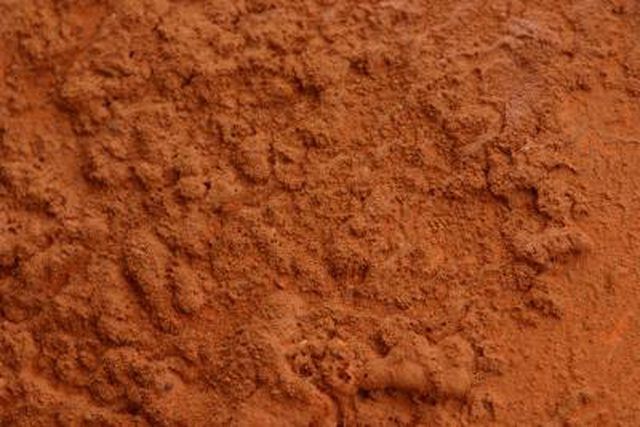Bulbs
Flower Basics
Flower Beds & Specialty Gardens
Flower Garden
Garden Furniture
Garden Gnomes
Garden Seeds
Garden Sheds
Garden Statues
Garden Tools & Supplies
Gardening Basics
Green & Organic
Groundcovers & Vines
Growing Annuals
Growing Basil
Growing Beans
Growing Berries
Growing Blueberries
Growing Cactus
Growing Corn
Growing Cotton
Growing Edibles
Growing Flowers
Growing Garlic
Growing Grapes
Growing Grass
Growing Herbs
Growing Jasmine
Growing Mint
Growing Mushrooms
Orchids
Growing Peanuts
Growing Perennials
Growing Plants
Growing Rosemary
Growing Roses
Growing Strawberries
Growing Sunflowers
Growing Thyme
Growing Tomatoes
Growing Tulips
Growing Vegetables
Herb Basics
Herb Garden
Indoor Growing
Landscaping Basics
Landscaping Patios
Landscaping Plants
Landscaping Shrubs
Landscaping Trees
Landscaping Walks & Pathways
Lawn Basics
Lawn Maintenance
Lawn Mowers
Lawn Ornaments
Lawn Planting
Lawn Tools
Outdoor Growing
Overall Landscape Planning
Pests, Weeds & Problems
Plant Basics
Rock Garden
Rose Garden
Shrubs
Soil
Specialty Gardens
Trees
Vegetable Garden
Yard Maintenance
How to Use Soil Amendment for Hardpan
How to Use Soil Amendment for Hardpan. In agricultural terminology, hard-pan soil means soil that is compacted or dense and does not readily absorb water. Often a hard-pan layer will be found just a few inches under the topsoil. Some hard-pan layers are formed from minerals or materials in the soil that bind the soil particles. Other times, the...

In agricultural terminology, hard-pan soil means soil that is compacted or dense and does not readily absorb water. Often a hard-pan layer will be found just a few inches under the topsoil. Some hard-pan layers are formed from minerals or materials in the soil that bind the soil particles. Other times, the hard-pan layer is formed by compaction. Repeated plowing with a heavy garden tractor or movement of other equipment across the soil can compact the soil to form a dense layer that does not allow adequate moisture penetration.
Things You'll Need
Garden tiller
Gypsum
Organic compost
Straw
Aged, non-treated sawdust
Test the soil. Take a sample of garden or landscape soil to your county extension agent to test for pH levels and nutrient content. Amend as recommended. Soil with a lower than desired pH level can be improved by an application of dolomite (calcium and magnesium). One lb of dolomite to every 100 square feet will raise the pH level of the soil by one point. Apply following package label instructions.
Loosen the soil with gypsum. Available from home and garden centers, gypsum should be broadcast on the soil and worked in well. Apply according to package directions. Prior to planting add 20 to 30 pounds of gypsum per 1,000 square feet. After application, water well. Gypsum is the primary ingredient in wall board. Recycle wall board waste from constructions sites by breaking up pieces and adding to the compost pile. Waste wall board can also be crushed and added directly to the soil. Gypsum is an ideal soil amendment material. It is not toxic to humans or animals and will not burn plants. Gypsum can be applied any time during the growing season.
Work aged, non-treated sawdust or wood chips into the garden prior to planting. Add a six- to eight-inch layer and cultivate into the soil with a garden tiller. Sawdust helps break up compacted soils and retains moisture. As the sawdust decomposes it also add nutrients to the soil. (Sawdust does leech nitrogen from the soil, so an application of 10-10-10 fertilizer, applied seasonally, is recommended.)
Enrich the soil with organic compost rich in the minerals and nutrients plants need to survive. Cover the garden or planting area with an eight- to 12-inch layer of compost, cultivate into the soil and water well. The primary difference between rich, fertile soil and barren, infertile soil is the amount of primary minerals and trace minerals present in the soil. For healthy growth and root development, plants require nitrogen, phosphorous, potassium, calcium, magnesium, chromium, iron, boron and copper. Nitrogen and potassium stimulate plant growth; trace minerals control nutritional value and taste of fruits, vegetables, seeds, nuts, berries and grains. If minerals are out of balance you may produce sizable plants, but flavor and quality may be compromised.
Add a few drops of bio-degradable organic soap (baby shampoo works great) to your watering can and water around the base of plants. In compacted or hard-pan garden soils, where water stands on top and doesn't readily leech into the soil, a few drops of soap added to water breaks the surface tension, allowing the water to penetrate the soil and be absorbed by the roots.